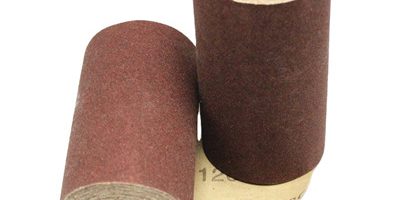Automotive restoration projects require meticulous attention to detail, and the right sandpaper rolls can be a crucial part of achieving outstanding results. In this blog post, we’ll explore how sandpaper rolls play a pivotal role in automotive restoration and share tips for success.
1. Paint Stripping:
- Purpose: Removing old paint and coatings from the vehicle’s body.
- Technique: Coarse-grit sandpaper rolls are ideal for this initial step. Be cautious not to damage the underlying metal or bodywork.
2. Surface Preparation:
- Purpose: Preparing the metal surface for primer or new paint.
- Technique: Progress to finer grits to create a smooth and uniform surface. Proper preparation is essential for paint adhesion.
3. Rust and Corrosion Removal:
- Purpose: Eliminating rust and corrosion from metal surfaces.
- Technique: Use coarse-grit sandpaper rolls to remove rust and then transition to finer grits for a rust-free finish.
4. Body Filler and Bondo Shaping:
- Purpose: Shaping body filler or Bondo for seamless repairs.
- Technique: Employ medium-grit sandpaper rolls to sculpt and shape the filler to match the vehicle’s contours.
5. Feather Edges:
- Purpose: Blending repaired areas with the surrounding surfaces.
- Technique: Use fine-grit sandpaper rolls to feather the edges of repaired sections for a seamless transition.
6. Wet Sanding for Paint Perfection:
- Purpose: Achieving a flawless finish for automotive paint.
- Technique: Wet sand with ultra-fine grit sandpaper rolls using water or a lubricant. This process ensures a mirror-like finish.
7. Contour Sanding:
- Purpose: Smoothing and shaping curved or contoured areas.
- Technique: Wrap sandpaper around a foam or rubber sanding block to maintain consistent pressure and contour to the vehicle’s shape.
8. Final Finish and Polishing:
- Purpose: Achieving a high-gloss finish for automotive paint.
- Technique: Utilize polishing compounds and fine-grit sandpaper rolls to create a showroom-quality shine.
9. Dust and Debris Management:
- Purpose: Minimizing dust and debris during sanding.
- Technique: Use sanding tools equipped with dust collection systems and work in a well-ventilated area.
10. Safety and Protection:
- Purpose: Ensuring safety during automotive restoration.
- Technique: Always wear the appropriate safety gear, including safety glasses, a dust mask, and hearing protection.
Successful automotive restoration relies on attention to detail, precision, and the right tools, including sandpaper rolls. By following these techniques and tips, you can achieve professional-quality results in your automotive restoration projects, whether you’re refinishing a classic car or restoring a vintage vehicle to its former glory.










